1. M. E. Mcgovern, D. D. Bruder, E. D. Huemiller, T. J. Rinker, J. T. Bracey, R. C. Sekol, and J. A. Abell, A Review of Research Needs in Nondestructive Evaluation for Quality Verification in Electric Vehicle Lithium-Ion Battery Cell Manufacturing,
J. Power Sources. 561 (2023) 232742
https://doi.org/10.1016/j.jpowsour.2023.232742
[CROSSREF] 4. E. M. Dold, E. Kaiser, S. Pricking, A. Killi, F. Kiefer, S. Bisch, S. Zaske, F. Baumann, R. Brockmann, S. Kaierle, and S. W. Heinemann, Copper Welding Applications with a 2 Kw Cw Laser in the Green Wavelength Regime, in High-Power Laser Materials Processing:Applications, Diagnostics, and Systems IX, City. (2020)
5. S. Grabmann, M. K. Kick, C. Geiger, F. Harst, A. Bachmann, and M. F. Zaeh, Toward the Flexible Production of Large-Format Lithium-Ion Batteries Using Laser- Based Cell-Internal Contacting,
J. Laser. Appl. 34(4) (2022) 042017
https://doi.org/10.2351/7.0000778
[CROSSREF] 6. H. Mohseni, M. Schmoeller, and M. F. Zaeh, A Novel Approach for Welding Metallic Foils Using Pulsed- Laser Radiation in the Field of Battery Production, Proceedngs of Proceedings of the Conference Lasers in Manufacturing, Munich, Germany. (2019)
7. M. Kang, W. S. Choi, and S. Kang, Ultrasonic and Laser Welding Technologies on Al/Cu Dissimilar Materials for the Lithium-Ion Battery Cell or Module Manufacturing,
J. Weld. Join. 37(2) (2019) 52ŌĆō59.
https://doi.org/10.5781/jwj.2019.37.2.8
[CROSSREF] 8. W. W. Cai, B. Kang, and S. J. Hu, Ultrasonic Welding of Lithium-Ion Batteries, ASME Press, New York, USA. (2017)
11. D. Gera, B. Fu, U. F. H. R. Suhuddin, A. Plaine, N. Alcantara, J. F. Dos Santos, and B. Klusemann, Microstructure, Mechanical and Functional Properties of Refill Friction Stir Spot Welds on Multilayered Aluminum Foils for Battery Application,
J. Mater. Res. 13 (2021) 2272ŌĆō2286.
https://doi.org/10.1016/j.jmrt.2021.06.017
[CROSSREF] 12. M. E. Sigl, S. Grabmann, L. F. Kick, A. Zens, R. Hartl, and M. F. Zaeh, Cell-Internal Contacting of Prismatic Lithium-Ion Batteries Using Micro-Friction Stir Spot Welding,
Batteries,. 8(10) (2022) 8100174
https://doi.org/10.3390/batteries8100174
[CROSSREF] 14. S. Grabmann, J. Kriegler, F. Harst, F. J. G├╝nter, and M. F. Zaeh, Laser Welding of Current Collector Foil Stacks in Battery Production-Mechanical Properties of Joints Welded with a Green High-Power Disk Laser,
Int. J. Adv. Manuf. Technol. 118(7-8) (2021) 2571ŌĆō 2586.
https://doi.org/10.1007/s00170-021-07839-0
[CROSSREF] 15. S. Shin and D. Kim, Evaluation of Weldability Based on Alignment Condition of Horns and Anvils Used in Multilayered Battery Cell Welding Process in Ultrasonic Metal Welding,
J. Weld. Join. 39(5) (2021) 552ŌĆō557.
https://doi.org/10.5781/jwj.2021.39.5.12
[CROSSREF] 16. D. Wang, Y. Bao, and J. Shi, Online Lithium-Ion Battery Internal Resistance Measurement Application in State-of-Charge Estimation Using the Extended Kalman Filter,
Energies. 10(9) (2017)
https://doi.org/10.3390/en10091284
[CROSSREF] 17. H. J. Lee and Y. H. Jang, Li-Ion Battery Ultrasonic Welding, Proceedng of Annual KSME Conference, Seogwipo, Korea. (2015) 4111ŌĆō4114.
19. R. Schedewy, E. Beyer, B. Brenner, and J. Standfuss, Prospects of Welding Foils with Solid State Laser for Lithium-Ion Batteries,
International Congress on Applications of Lasers &Electro-Optics, Cincinnati,USA. (2011) 817ŌĆō824.
https://doi.org/10.2351/1.5062332
[CROSSREF] 21. S. Shawn Lee, T. Hyung Kim, S. Jack Hu, W. W. Cai, and J. A. Abell, Analysis of Weld Formation in Multilayer Ultrasonic Metal Welding Using High- Speed Images,
J. Manuf. Sci. Eng. 137(3) (2015) 031016
https://doi.org/10.1115/1.4029787
[CROSSREF] 22. S. Shin, S. Nam, J. Yu, J. Park, and D. Kim, Ultrasonic Metal Welding of Multilayered Copper Foils to Nickel-Plated Copper Sheet in Lithium-Ion Battery Cell,
Met. 11(8) (2021) 1108115
https://doi.org/10.3390/met11081195
[CROSSREF] 23. J. Tsujino and E. Sugimoto, Ultrasonic Complex Vibration Welding of Many Metal Foils and Terminals of Li-Ion Battery and Capacitor,
Proceedngs of 2016 IEEE International Ultrasonics Symposium (IUS), Tours, France. (2016) 1ŌĆō4.
[CROSSREF] 25. Y. Luo, H. Chung, W. Cai, T. Rinker, S. Jack Hu, E. Kannatey-Asibu, and J. Abell, Joint Formation in Multilayered Ultrasonic Welding of Ni-Coated Cu and the Effect of Preheating,
J. Manuf. Sci. Eng. 140(11) (2018) 111003ŌĆō111010.
https://doi.org/10.1115/1.4040878
[CROSSREF] 27. H. Li, H. Choi, C. Ma, J. Zhao, H. Jiang, W. Cai, J. A. Abell, and X. Li, Transient Temperature and Heat Flux Measurement in Ultrasonic Joining of Battery Tabs Using Thin-Film Microsensors,
J. Manuf. Sc.i Eng. 135(5) (2013)
https://doi.org/10.1115/1.4024816
[CROSSREF] 28. S. Shawn Lee, T. Hyung Kim, S. Jack Hu, W. W. Cai, J. A. Abell, and J. Li, Characterization of Joint Quality in Ultrasonic Welding of Battery Tabs,
J. Manuf. Sci. Eng. 135(2) (2013)
https://doi.org/10.1115/1.4023364
[CROSSREF] 29. C. Shao, T. H. Kim, S. J. Hu, J. J. Jin, J. A. Abell, and J. P. Spicer, Tool Wear Monitoring for Ultrasonic Metal Welding of Lithium-Ion Batteries,
J. Manuf. Sci. Eng. 138(5) (2016) 051005
[CROSSREF] [PDF] 32. D. Lee, E. Kannatey-Asibu Jr, and W. Cai, Ultrasonic Welding Simulations of Multiple, Thin and Dissimilar Metals for Battery Joining,
Proceedngs of ASME/ ISCIE 2012 International Symposium on Flexible Automation, St. Louis, USA. (2012) 573ŌĆō584.
https://doi.org/10.1115/ISFA2012-7192
[CROSSREF] 35. M. J. Finuf, B. Gray, R. Fritz, J. M. Pelaprat, and M. S, Zediker:Laser Welding Copper with Hight Power Cw Blue Laser,
International Congress on Applications of Lasers &Electro-Optics, Orlando, USA. (2017)
https://doi.org/10.2351/1.5138176
[CROSSREF] 36. A. Olowinsky, C. Spurk, J. Helm, and A. Gillner, Laser Based Joining of Electrode Stacks for Automated Large-Scale Production of Li-Ion Battery Cells,
Energy. Technol. 11(5) (2022) 202200770
https://doi.org/10.1002/ente.202200770
[CROSSREF] 37. T. Engelhardt, M. Brandner, R. Weber, and T. Graf, Influence of Welding Parameters and Stack Configuration on Pore Formation of Laser Welded Aluminum Foil Stacks, Proceeding of lasers in manufacuturing, Munich, Germany. (2015)
39. M. S. Zediker, R. D. Fritz, M. J. Finuf, and J. M. Pelaprat, Laser Welding Components for Electric Vehicles with a High-Power Blue Laser System,
J. Laser. Appl. 32(2) (2020) 022038
https://doi.org/10.2351/7.0000054
[CROSSREF] 40. S. Nothdurft, O. Seffer, J. Hermsdorf, L. Overmeyer, and S. Kaierle, Investigations on Laser Beam Welding of Thin Foils of Copper and Aluminum Regarding Weld Seam Quality Using Different Laser Beam Sources,
J. Laser Appl. 34(4) (2022) 042011
https://doi.org/10.2351/7.0000777
[CROSSREF] 41. S. Grabmann, L. Mayr, M. K. Kick, and M. F. Zaeh, Enhancing Laser-Based Contacting of Aluminum Current Collector Foils for the Production of LithiumIon Batteries Using a Nanosecond Pulsed Fiber Laser,
Procedia CIRP. 111 (2022) 778ŌĆō783.
https://doi.org/10.1016/j.procir.2022.08.127
[CROSSREF]




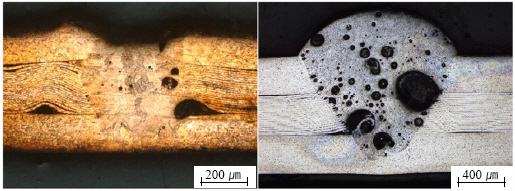

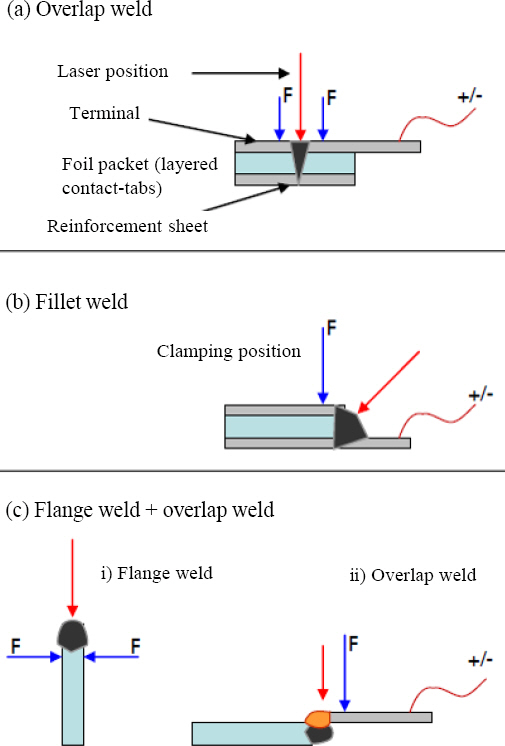






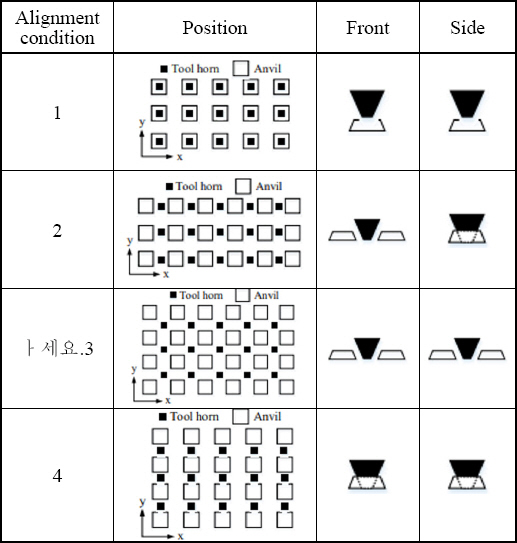

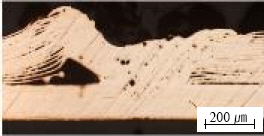
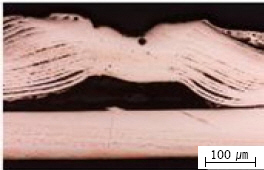

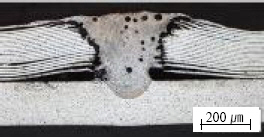
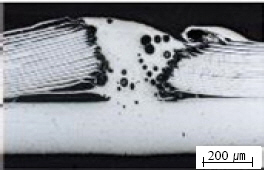

 PDF Links
PDF Links PubReader
PubReader ePub Link
ePub Link Full text via DOI
Full text via DOI Download Citation
Download Citation Print
Print



